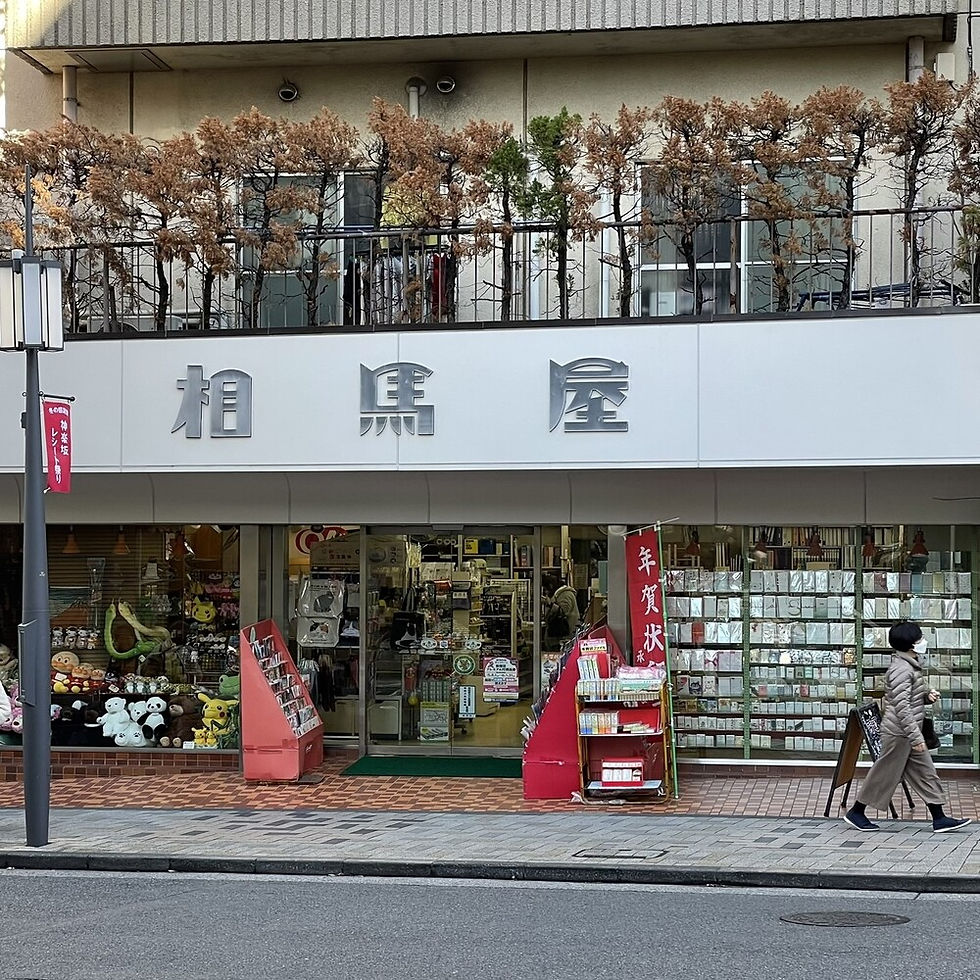Did you know that Natsume Soseki, author of "I Am a Cat" and "Kokoro," had deep ties to Kagurazaka?
- Shinya Yamada
- May 1, 2024
- 3 min read
Updated: Sep 22, 2024

Natsume Soseki’s Deep Connections to Kagurazaka
Kagurazaka is known as a cultural city where many literary giants have lived. Figures like Ozaki Koyo, Natsume Soseki, and Tsubouchi Shoyo have resided here, giving the area a reputation as the birthplace of modern Japanese literature. Some claims place the origins of modern Japanese literature in Hongo, where Tsubouchi Shoyo, Futabatei Shimei, Higuchi Ichiyo, and Ishikawa Takuboku lived. Coincidentally, I lived in Hongo before moving to Kagurazaka. This post will focus on Natsume Soseki’s deep connections to Kagurazaka.
Natsume Soseki (born Natsume Kinnosuke) was born in February 1867 in Waseda (then known as Ushigome Babashita, now Kikui-cho in Shinjuku Ward, Tokyo). This location is near the current Waseda Station and Anahachimangu Shrine. His father, Naokatsu, was a community leader who governed the area from Edo Ushigome to Takadanobaba.
After graduating from the English department of the Imperial University (later Tokyo Imperial University, now the University of Tokyo), Soseki worked as a high school teacher in Matsuyama and a professor in Kumamoto before studying in England. Upon returning from England, he briefly lived from January 24 to March 3, 1903, at his father-in-law’s (his wife Kyoko’s father) house in Ushigome Yaraicho. This is near the current Shinchosha head office, close to Kagurazaka Station exit 2. He later moved to Bunkyo-ku Mukogaoka, where he lived for three years and wrote "I Am a Cat," "Botchan," and "Kusamakura." "Botchan" features the Bishamonten of Kagurazaka.

Later, Soseki moved to Waseda Minamicho in 1907 and wrote many of his famous works, including "Sanshiro," "And Then," "Kokoro," and "Grass on the Wayside," until his death in December 1916. His house in Waseda Minamicho, known as "Soseki Sanbo," became a gathering place for his students, including Akutagawa Ryunosuke and Uchida Hyakken. Today, it is the Natsume Soseki Memorial Museum (Soseki Sanbo Memorial Museum), located about a 10-minute walk from Kagurazaka Station on the Tokyo Metro Tozai Line (or about 5 minutes from Waseda Station).

Natsume Soseki's Connections to Shops in Kagurazaka
Established in 1659, this stationery store originally made paper. Even today, it operates at the same location as in the Edo period. In the mid-Meiji era, based on advice from Ozaki Koyo, the store began selling Western paper instead of traditional Japanese paper under the brand "Soma-ya Manuscript Paper." Literary giants like Natsume Soseki, Kitahara Hakushu, and Ishikawa Takuboku favored it. The store also features manuscripts written by these authors. Located on Jizozaka slope, known locally as Waradana due to the many straw dealers there, it was a path frequented by Soseki, a fan of Rakugo, heading to Waradana-tei, a storytelling theater.

Founded in 1869, originally as one of the few beef pot restaurants in Japan, located at the foot of Kagurazaka. Soseki often dined here with Suzuki Miekichi, founder of the Akai Tori Movement. Shimakin allows guests to invite Kagurazaka geisha for entertainment.
Tawaraya
Although it closed in 2002, 'Tawaraya,' a long-established Western-style restaurant located next to Bishamonten, was also a favorite of Natsume Soseki. It started as a beef pot restaurant around the end of the 19th century, placing Kagurazaka as one of the premier beef pot areas in Japan post-Edo period. The beef pot symbolized civilization and enlightenment, making Kagurazaka, which had many samurai residences, quick to adopt new trends. Tawaraya was also the first in Japan to start a fruit parlor at the end of the Meiji era, inspiring famous establishments like Senbikiya and Shinjuku Takano to offer similar services.

Join Our Kagurazaka Walking Tour to Explore Natsume Soseki's Historic Sites
Why not explore Natsume Soseki's historic spots with our Kagurazaka Walking Tour, guided by local experts? Walking the paths that Natsume Soseki once did will surely add a memorable layer to your Japan trip, especially for fans of his work.
Book Each Experience
How to Access Kagurazaka
The Kagurazaka area is conveniently located within 30 minutes from any major station in Tokyo. This is because Kagurazaka is situated in the heart of Tokyo, at the center of the Yamanote Line. Please come and visit this convenient and charming Kagurazaka.








Comentarios